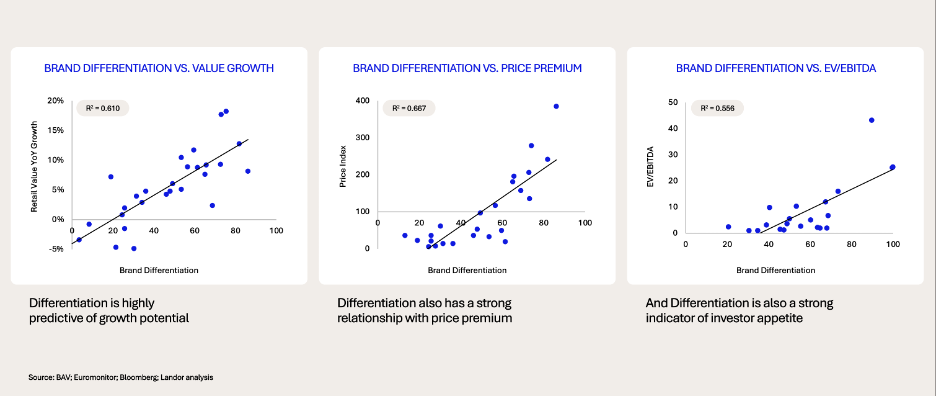
Marketing leaders continually juggle between an increasingly complex list of marketing strategies and business priorities. It’s universally agreed that a stronger brand generates more revenue than a weaker one.
Marketers often find themselves at a crossroads and having to choose between long-term brand building and short-term sales targets. There is a common boardroom debate between prioritization of brand marketing or demand generation. But this is a false dichotomy. In actuality, modern marketers are increasingly finding that brand and demand are not opposing forces but rather two sides of the same coin. It’s challenging to build a successful brand without demand generation, and it’s equally hard to run successful demand generation without a strong brand. They are interdependent, each amplifying the other’s impact.
So how can marketers ensure they can elevate brand discussions to the top the agenda in C-suite or Boardroom agenda? The answer lies in quantifying and monetizing brand.
The Power in Measuring Brand
The benefits of a brand are often underestimated because it is intangible and seen as too difficult to measure. However, advances in tools to measure intangible assets have shown that brand can indeed be effectively quantified. This allows marketers today to measure the current contribution of a brand and forecast its future potential.
Over the past 40 years, the balance sheet of the average company on the S&P 500 has shifted from being heavily weighted to tangible fixed assets to intangible assets. By looking at annual reports from public companies on the S&P 500, 83% of balance sheets were composed of tangible assets in 1970 compared to just 37% today. Part of this shift is due to companies’ increase in proprietary technologies, patents, copyrights and trademarks. But brand is a key intangible asset as well, with brand now representing over 33% of company value compared to 8% in 1970.
Brand performance measurement gives organizations a clear picture of where their company stands in its lifecycle, equity and market influence. It helps marketers understand what’s working, what’s not, and where there are opportunities for growth.
Monetizing Your Brand: An Unexplored Territory
While brand can be measured and quantified with a number, monetization takes brand measurement one step further to connect brand directly to business outcomes. A strong brand is often misunderstood as a recognizable logo or a catchy tagline. Effective brand measurement turns brand into an asset, creating a context of demand for your product or service, protecting price premiums and generating customer loyalty.
This process of turning brand equity into a tangible financial measurement is called brand monetization. By investing in building and measuring brand equity, companies have more control over where they build equity over time—which drives sales in the short-term and improves an organization’s long-term growth.
Brand Performance: The CMO’s Catalyst for Business Transformation
Chief marketing officers hold a crucial role in leveraging both brand and demand to drive business growth. Here are some tactics to help you navigate this journey:
- Integrate Brand and Demand: Rather than seeing brand and demand as separate entities, integrate them into your overall marketing strategy. Recognize their interdependence and leverage each to amplify the other’s impact.
- Invest in Measurement Tools: Use advanced tools to measure intangible assets like brand value. This will allow you to quantify the current contribution of your brand and forecast its future potential.
- Balance Short-term and Long-term Goals: While hitting short-term sales targets is important, don’t lose sight of long-term brand building. Striking a balance between the two is key to sustainable growth.
- Embrace Data-Driven Decision Making: Use data to inform your decisions. Invest in getting the right data and use it to demonstrate the commercial value of brand-building within your organization.
By debunking myths around brand vs. demand in your organization, you can unlock the hidden potential of your brand and drive business transformation.
Connecting Brand and Demand for Business Transformation
By effectively measuring, monetizing and projecting brand performance, leaders equip their organization with the tools it needs to adapt, evolve and thrive in today’s dynamic market landscape.
A strong brand acts as a force multiplier, amplifying the impact of marketing efforts and driving both immediate and long-term business results. Brand measurement is the key to unlocking new markets, attracting and retaining valuable customers, and establishing a competitive edge.
Stronger brands lead to stronger year-over-year growth, stronger price premium and increased investor appetite.

Today’s marketers are increasingly leveraging brand performance, measurement and monetization to accelerate demand generation or performance marketing. Brand monetization has become a common requirement from the C-suite at contemporary organizations, where it is increasingly seen as a critical ingredient for any business aiming to achieve sustained growth and success.
Anthony Riva is Executive Director of Brand Performance at Landor.



